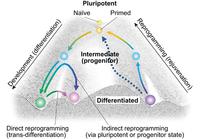 Much of complex biology results
from interactions among a large number of individually simpler elements.
Behavior of large collection of cells from microbes to stem cells are no
different. Nonetheless, the population dynamics of heterogeneous populations is
only now beginning to attract attention it deserves because we have only just,
within in the last decade or so developed experimental tools for tracking
heterogeneous populations. In this talk I will describe how theoretical ideas
inspired from statistical physics are being used to understand behavior of such
heterogeneous populations, focusing on two examples. In first, I will present a
coarse-grained model of blood regeneration, which provides a framework to
understand large variations (~3 orders of magnitude) among contributions from
individual stem cells without active competition. In contrast, the second
describes how competition plays a central role in understanding dynamics of
reprogramming population of somatic cells.
Much of complex biology results
from interactions among a large number of individually simpler elements.
Behavior of large collection of cells from microbes to stem cells are no
different. Nonetheless, the population dynamics of heterogeneous populations is
only now beginning to attract attention it deserves because we have only just,
within in the last decade or so developed experimental tools for tracking
heterogeneous populations. In this talk I will describe how theoretical ideas
inspired from statistical physics are being used to understand behavior of such
heterogeneous populations, focusing on two examples. In first, I will present a
coarse-grained model of blood regeneration, which provides a framework to
understand large variations (~3 orders of magnitude) among contributions from
individual stem cells without active competition. In contrast, the second
describes how competition plays a central role in understanding dynamics of
reprogramming population of somatic cells.

